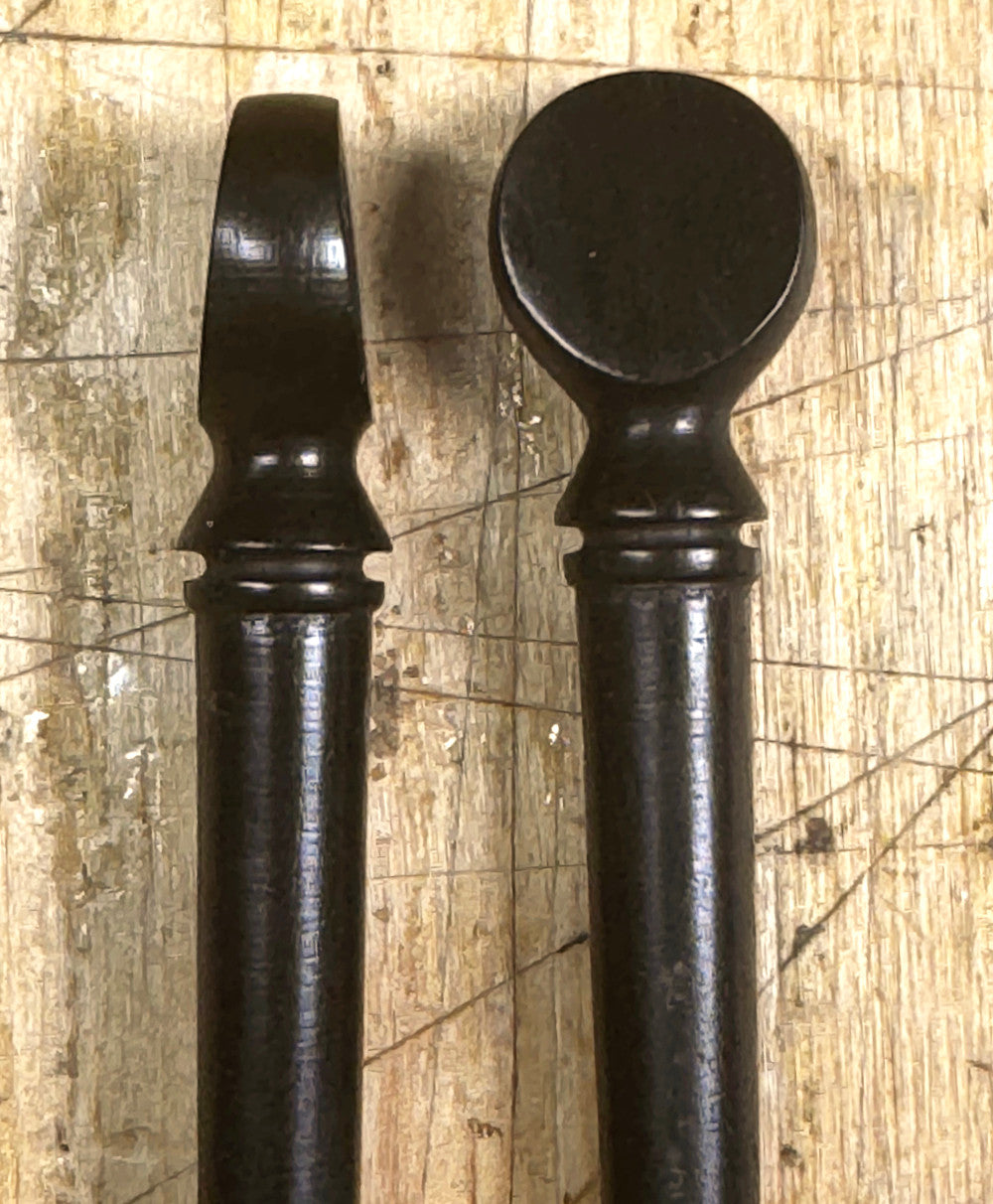Description

This is a set of 12 ebony lute pegs.
- Overall Length - 98.50mm
- Shaft Length - 76.50mm
- Grip Width - 16.50mm
- Diameter at Collar - 8mm
- Diameter at End - 6mm
These pegs are mostly handmade and have a taper of roughly 30:1 starting at the collar for about half the length, at which point the taper becomes less to the end. The shaft will need to be carefully shaped a little to be fully round and fit your particular reamer.
Dimensions are approximate and may vary slightly from one peg to another. These pegs are priced as a set and are unable to be split.
*Please note that sale pegs are not returnable.*


